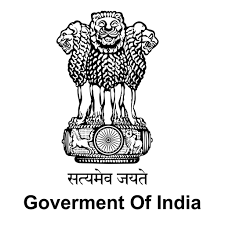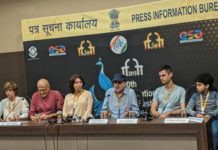At COP 21, as part of its Nationally Determined Contributions (NDCs), India had committed to achieving 40% of its installed electricity capacity from non-fossil energy sources by 2030. The country has achieved this target in November 2021 itself. The country’s installed Renewable Energy (RE) capacity stands at 150.54 GW (solar: 48.55 GW, wind: 40.03 GW, Small hydro Power: 4.83, Bio-power: 10.62, Large Hydro: 46.51 GW) as on 30.11.2021 while its nuclear energy-based installed electricity capacity stands at 6.78 GW. This brings the total non-fossil-based installed energy capacity to 157.32 GW which is 40.1% of the total installed electricity capacity of 392.01 GW. In line with the Hon’ble Prime Minister’s announcement at the recently concluded CoP26, the Government is committed to achieving 500 GW of installed electricity capacity from non-fossil fuel sources by the year 2030.
During the last 7.5 years, India has witnessed the fastest rate of growth in renewable energy capacity addition among all large economies, with renewable energy capacity (including large hydro) growing 1.97 times and solar energy expanding over 18 times.
- Investment in Renewables
- India’s renewable energy program is driven by private sector investment. As per the REN21 Renewables 2020 Global status Report, during the period 2014 -2019 renewable energy programs and projects in India attracted an investment of US$ 64.4 billion. In the year 2019 alone, US$ 11.2 billion were invested. New opportunities have emerged, and altogether new business space has been created. Indian companies have begun to explore foreign stock exchanges as a source of funds. India is progressively becoming a favored destination for investment in renewables.
- As per Foreign Direct Investment (FDI) data Cell, DPIIT, the Indian ‘Non-Conventional Energy’ sector received approximately US$ 7.27 billion as FDI from the year 2014-15 up to June 2021. Of this, an FDI of US$ 797.21 million was attracted during 2020-21. Liberal foreign investment policy allows the foreign investors to enter into joint ventures with an Indian partner for financial and/or technical collaboration and for setting up renewable energy-based power generation projects. Up to 100 percent, foreign investment as equity qualifies for automatic approval, under the extant FDI policy of the Government.
- Major Programmes and Schemes:
- Pradhan Mantri Kisan Urja Suraksha evam Utthaan Mahabhiyan (PM-KUSUM): To provide energy and water security, de-dieselize the farm sector and also generate additional income for farmers by producing solar power, the Government launched PM-KUSUM Scheme for farmers. The Scheme consists of three components:
- Component A: Installation of 10,000 MW of Decentralized Grid Connected Solar Power Plants each of capacity up to 2 MW
- Component B: Setting up of 20 lakh standalone Solar Powered Agriculture Pumps
- Component C: Solarisation of 15 Lakh existing Grid-connected Agriculture Pumps
The Scheme aims to add 30.8 GW of solar capacity with the central financial support of over Rs. 34,000 Crore. Based on the learning during the first year, business models for feeder level solarisation were included as a new variant under Component-C. Convergence of Scheme with PM-KSY and Agriculture Infrastructure Fund also accomplished. For ease of availability of finance, the Reserve Bank of India has included the three components of the Scheme under Priority Sector Lending Guidelines. Cumulatively, about 5000 MW capacity of small solar power plants under component-A, 3.6 lakh standalone solar pumps under component B and solarisation of over 10 lakh grid-connected pumps under the two variants of component C have been allocated in various States. After restrictions on the COVID-19 pandemic were relaxed, the installation has picked up and as of 30.11.2021, over 75000 stand-alone solar pumps have been installed under the Component-B, total 20 MW capacity solar power plants installed under Component-A, and over 1000 pumps reported solarised under individual pump solarisation variant of Component-C. Implementation of feeder level solarization variant under Component-C, which was introduced in December 2020 has also started in several States.
- Production Linked Incentive (PLI) Scheme: On 28.04.2021, the Government introduced, Production Linked Incentive Scheme “National Programme on High-Efficiency Solar PV Modules” with an outlay of Rs. 4500 crores to support and promote manufacturing of high-efficiency solar PV modules, including the upstage vertical components like cells, wafers, ingots, and polysilicon in India, and thus reduce the import dependence in the Solar Photo Voltaic (PV) sector. In pursuance of the decision, a tender for the invitation of bids for the manufacture of high-efficiency solar PV modules was issued. The tender received a very encouraging response wherein 18 bids were received which could add another around 55 GW of solar PV module manufacturing to present a solar PV module manufacturing capacity of around 11 GW. Letter of Awards have been issued by IREDA on 11.11.2021/02.12.2021 to three successful bidders for setting up 8737 MW capacity of fully integrated solar PV manufacturing units.
- Solar Parks Scheme: To facilitate large-scale grid-connected solar power projects, a scheme for “Development of Solar Parks and Ultra Mega Solar Power Projects” is under implementation with a target capacity of 40 GW capacity by March 2022. Solar parks provide solar power developers with a plug-and-play model, by facilitating necessary infrastructure like land, power evacuation facilities, road connectivity, water facility, etc. along with all statutory clearances. As of 30.11.2021, 52 solar parks have been sanctioned with a cumulative capacity of 37.92 GW in 14 states. Solar power projects of an aggregate capacity of around 9.2 GW have already been commissioned in these parks.
- Roof Top Solar program Phase-II: Roof Top Solar program Phase-II for accelerated deployment of solar rooftop systems with a target of 40 GW installed capacity by the year 2021-22, is also under implementation. The scheme provides for financial assistance of up to 4 GW of solar rooftop capacity to the residential sector and there is a provision to incentivize the distribution companies for incremental achievement over the previous year. For the residential sector use of domestically manufactured solar cells and modules have been mandated. This scheme is expected to act as a catalyst for adding solar cell and module manufacturing capacity in India. As of 30.11.2021, a cumulative 5.7 GW solar rooftop project has been set up in the country. Against the target of 4GW for the Residential sector under Rooftop Solar program Phase-II, allocation of 3.4 GW already made to various states/ UTs and 1.07 GW already installed.
- Central Public Sector Undertaking (CPSU) Scheme: A scheme for setting up 12 GW Grid- Connected Solar PV Power Projects by Central Public Sector Undertakings with domestic cells and modules is under implementation. Viability Gap Funding support is provided under this scheme. Apart from adding solar capacity, the scheme will also create demand for domestically manufactured solar cells/modules, and thus help domestic manufacturing. Under this scheme, the Government has sanctioned around 8.2 GW of projects, as of 30.11.2021.
- Wind Power
India’s wind power potential at a hub height of 120 meters is 695 GW. The wind power installed capacity has grown 1.9 times during the past 7.5 years to about 40 GW and 9.67 GW of projects are at various stages of commissioning (as of 30.11 2021). India has the 4th largest wind power capacity in the world.
The wind energy sector is led by the indigenous wind power industry with a strong project ecosystem, operation capabilities, and a manufacturing base of about 12 GW per annum. All the major global players of Wind Turbine Manufacturing field have their presence in the country and over 35 different models of wind turbines are being manufactured by more than 15 different companies, through joint ventures under licensed production, subsidiaries of foreign companies, and Indian companies with their technology. The unit size of wind turbines in India has gone up to 3.6 MW.
The government of India has notified the Offshore Wind Energy Policy to harness the potential of offshore wind energy along India’s coastline. Ministry is developing a strategy and roadmap for the installation of offshore wind projects off the coast of Gujarat and Tamil Nadu.
The Ministry has notified the wind-solar hybrid policy, providing a framework for the promotion of large grid-connected wind-solar PV hybrid projects for optimal and efficient utilization of transmission infrastructure and land, reducing the variability in renewable power generation and achieving better grid stability. As of 30.11.2021, a capacity of 3.75 GW of wind-solar hybrid projects has been awarded, out of which 0.2 GW capacity is already commissioned. In addition, the capacity of 1.7 GW wind-solar hybrid projects is at various stages of bidding.
- Off-Grid Solar PV Applications Programme Phase III: Phase-III of the Off-Grid Solar PV Applications Programme for Solar Street Lights, Solar Study Lamps, and Solar Power Packs was available on 31.03.2021. As of 30.11.2021 over 1.45 lakh solar street lights were installed, 9.03 lakh solar study lamps distributed and 2.5 MW solar power packs have been set up as reported by State Nodal Agencies (SNAs).
- Atal Jyoti Yojana (AJAY) Phase-II: The AJAY Ph-II Scheme for installation of solar street lights with 25% fund contribution from MPLAD Funds was discontinued from 1 April 2020 as the Government decided to suspend the MPLAD Funds for the next two years i.e. 2020-21 and 2021-22. However, installation of 1.5 lakh solar street lights sanctioned under the scheme till March 2020 was under progress, and as of 30.11.2021 around 1.21 lakh solar street lights have reportedly been installed and balances are targeted to be completed by December 2021.
- Green Energy Corridor
To facilitate renewable power evacuation and reshape the grid for future requirements, the Green Energy Corridor (GEC) projects have been initiated. The first component of the scheme, Inter-state GEC with a target capacity of 3200 circuit kilometer (ckm) transmission lines and 17,000 MVA capacity sub-stations, was completed in March 2020. The second component – Intra-state GEC with a target capacity of 9700 ckm transmission lines and 22,600 MVA capacity sub-stations is expected to be completed by June 2022. As of 30.11.2021, 8434 ckm of intra-state transmission lines have been constructed and 15268 MVA intra-state substations have been charged.
- Other renewables for power generation
The following Bio-energy schemes were under implementation by the Ministry:
- Program on Energy from Urban, Industrial and Agricultural Wastes/ Residues
- Scheme to support Promotion of Biomass-based cogeneration in sugar mills and other industries
- Biogas Power (Off-Grid) Generation and Thermal application Programme (BPGTP)
- New National Biogas and Organic Manure Programme (NNBOMP)
Ministry of New and Renewable Energy has been implementing the above-mentioned schemes 2020-21. The programs which were valid till 31.03.2021, have been recommended for continuation by EFC for the period FY 2021-22 to 2025-26 only for meeting the already created liabilities. Thus, no new projects after 31.03.2021 are to be sanctioned.
As of 31.11.2021, the installed capacity of biomass power and cogeneration projects stood at about 9.4 GW(Bagasse) and 0.77 GWeq (Non-Bagasse), waste to energy projects capacity was 199.14 MW(grid-connected) and 234.97 MWeq (off-grid), and about 4.83 GW small hydropower capacity from 1146 small operational hydropower projects.
- Policies and Initiatives:
- Waiver of Inter-State Transmission System (ISTS) charges for inter-state sale of solar and wind power for projects to be commissioned by 30.06.2025,
- Keeping in view India’s long-term goals of decarbonizing the electricity systems, and achieving energy security, and in keeping with our international commitments, in July 2016, long term Renewable Purchase Obligation growth trajectory, uniformly applicable to all States/UTs up to the year 2021-22, was notified. Further, the Ministry of Power on 29.01.2021 included Hydropower Purchase Obligation (HPO) within Non-Solar Renewable Purchase Obligation (RPO) and notified the long term updated RPO trajectory from 2019-20 to 2021-22 including HPO till 2029-30.
- Competitive Bidding guidelines for procurement of solar and wind power have been notified under section 63 of the Electricity Act, 2003. These Guidelines provide for standardization and uniformity of the procurement process and a risk-sharing framework between various stakeholders, thereby encouraging investments, enhancing bankability, and improving profitability for projects. The Guidelines also facilitate transparency and fairness in the procurement processes which have resulted in the drastic fall in solar and wind power prices over the past few years. Solar PV power tariff had dropped to an all-time low of Rs. 1.99 per unit in an auction of projects of 500 MW capacity by Gujarat Urja Vikas Nigam Ltd (GUVNL) in December 2020.
- To build investor trust by ensuring payment security and tackle the risks related to delays in payments to independent power producers, DISCOMs have been mandated to issue and maintain letters of credit (LCs);
- Efforts have been undertaken to strengthen and expand the domestic manufacturing ecosystem. Schemes namely PM-KUSUM, Solar Rooftop, and CPSU have a precondition of Domestic Content Requirement, directly creating a domestic demand of more than 36 GW solar PV (cells & modules). To curb the proliferation of imported solar PV cells and modules, a Safeguard Duty was imposed w.e.f. 30.07.2018 for two years. It has been extended for one more year at the rates of 14.90 percent for imports from 30.07.2020 to 29.01.2021, and 14.50 percent for imports from 30.01.2021 to 29.07.2021. The government has decided to impose Basic Customs Duty (BCD) on the import of solar PV modules @40% and the import of solar PV cells @25% with effect from 01.04.2022.
- Hydrogen Mission
In the Independence Day speech on 15.08.2021, Prime Minister announced the launch of the National Hydrogen Mission and stated the goal to make India a global hub for Green Hydrogen production and export. The draft National Green Hydrogen Mission document is under inter-ministerial consultations.
The Mission proposes a framework for inter alia creating demand for Green Hydrogen in sectors such as petroleum refining and fertilizer production; support for indigenous manufacturing of critical technologies; Research & Development activities; and an enabling policy and regulatory framework. The proposed steps will lead to the development of additional renewable energy capacity for Green Hydrogen production.
- One Sun – One World – One Grid (OSOWOG)
A tripartite Memorandum of Understanding (MoU) was signed between the Ministry of New and Renewable Energy (MNRE), the International Solar Alliance (ISA), and the World Bank on 08.09.2020 for a study on the OSOWOG initiative. Currently, the implementation plan, road map, and institutional framework are being developed by a consultant appointed for this purpose. The inception report has already been submitted by the consultant in September’2021. The complete study is expected to be completed by mid of 2022.
- International Solar Alliance
International Solar Alliance (ISA) was launched by Hon’ble Prime Minister of India, and the President of France on 30.11.2015 in Paris, France. With the signing and ratification of the ISA Framework Agreement by 15 countries, on 06.12.2017, ISA became the first international intergovernmental organization to be headquartered in India.
On 15.07.2020, this amendment came into force, which enables all member States of the UN, including those beyond the tropics, to join the ISA. As of 30.11.2021, 101 countries have signed the Framework Agreement of the ISA. Of these, 80 countries have also ratified the same.
- Issues/Challenges ahead
- Mobilization of the necessary finance and investment on competitive terms: Gearing up the banking sector for arranging finances for larger deployment goals, exploring low-interest rate, long-term international funding, and developing a suitable mechanism for risk mitigation or sharing by addressing both technical and financial bottlenecks are major challenges. The need for mobilization of funds on attractive terms has further increased with the launch of PM-KUSUM, which provides farmers an opportunity to become entrepreneurs and participate in India’s growth story. The ongoing efforts for mitigating investment risks, and easing approval processes would also need to be strengthened.
- Land acquisition: Land acquisition is one of the major challenges in renewable power development. Identification of land with RE potential, its conversion (if needed), clearance from land ceiling Act, the decision on land lease rent, clearance from revenue department, and other such clearances take time. State governments have to play a major role in the acquisition of land for RE projects.
- Creating an innovation and manufacturing eco-system in the country;
- Integrating larger share of renewables with the grid;
- Enabling supply of firm and dispatchable power from renewables;
- Enabling penetration of renewables in the so-called hard to decarbonize sectors.
- Some Steps by MNRE for facilitating RE Sector amid COVID-19 Pandemic:
- Ensuring uninterrupted operation of Renewable Energy (RE) Plants in lockdown:
MNRE had requested States/UTs for facilitating ensure uninterrupted essential operation of Renewable Energy Generating Stations (REGS) (solar power plants, wind power plants, solar-wind hybrid power plants, small hydropower plants, biomass/biogas based power plants, etc.) and provide facilitation /permission for material movement needed by them during the nation-wide lockdown for COVID-19 outbreak.
- Time-Extension of around 7.5 months on account of lock-down and disruption due to COVID-19:
MNRE had issued orders regarding treating lockdown due to COVID-19, like Force Majeure and granting of time-extension of around 7.5 months for renewable energy projects on account of lockdown and disruptions on account of COVID-19.
- Facilitating Invoicing: by non –insistence on signed hard copy.
MNRE had issued directions regarding accepting invoices over email without insisting on submission of signed hard copy and in cases where Joint Meter Reading (JMR) cannot be signed due to lockdown, acceptance of Invoices generated by RE Developers based on a photograph of meter reading/ downloaded meter data.
- Insisting on Must-Run, Timely Payments & no Curtailments:
MNRE had issued clarifications that Renewable Energy (RE) Generating Stations have been granted ‘Must-Run’ status and this status of ‘Must-Run’ remains unchanged during the period of lockdown, and further directing DISCOMs that since RE Generating Stations comprise only a minor portion of the total electricity generation in the country, the payments to RE generators be done regularly as was being done before lockdown as per the established procedure. MNRE further issued directions reiterating that Renewable Energy remains ‘Must-Run’ and any curtailment but for the grid, safety reasons would amount to deemed generation.






















